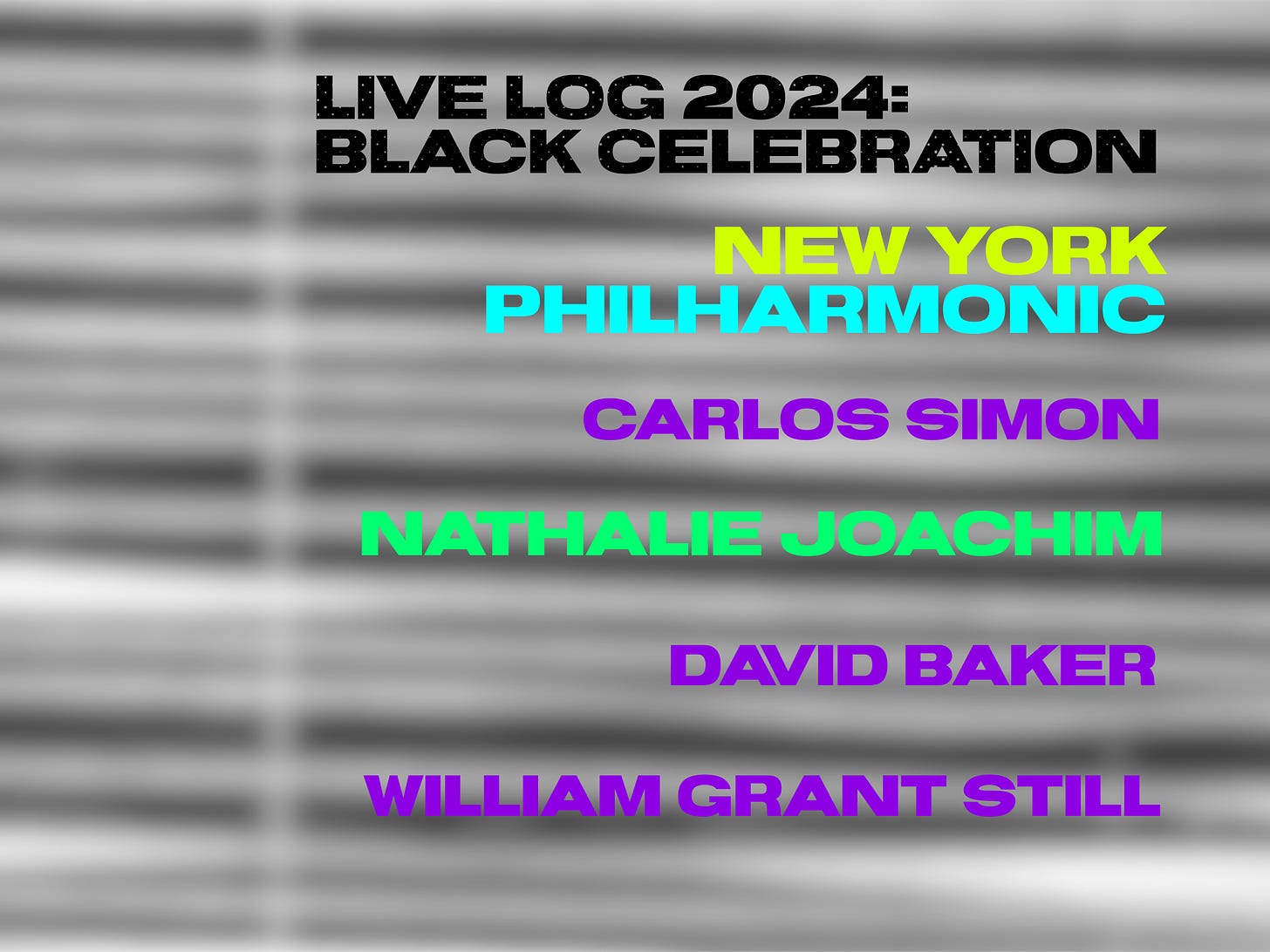Live Log 2024: Black Celebration
A New York premiere by Nathalie Joachim was but one highlight at the New York Philharmonic's night of Afromodernism.
The last time I made it to the Wu Tsai Theater at David Geffen Hall, I grumbled good-naturedly about having to sit through a Brahms concerto in between a stunning Zosha di Castri premiere and the first revisit of Lutoslawski’s Concerto for Orchestra in decades. Thanks to the banner of Exploring Afromodernism, I had no such complaints about the spectacul…
Keep reading with a 7-day free trial
Subscribe to AnEarful to keep reading this post and get 7 days of free access to the full post archives.




